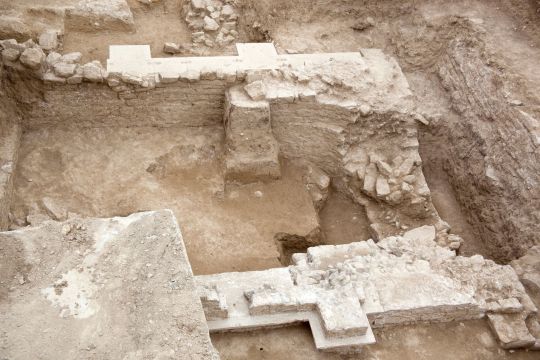Rižinice are plots of land in the fertile valley of Rupotina, on the eastern slopes of Mount Kozjak, where remains of a small church and buildings deemed to have been a part of a monastery complex have been found. Below them, there flows the creek called Ilijino vrilo (Elia’ Spring), surfacing near Crikvina, where there are remains of another small church and an old-Christian monastery. The location of these monasteries, if the structures were indeed monasteries, remind one of the saying Bernardus valles, Benedictus colles amabat, i.e. St. Bernard liked dwelling in the valleys, St. Benedict on the hills. The small number of friars (there would be at least three) had enough land at both locations, in Rižinice and Crkvina, to live humbly.
The locality attracted attention in 1891 when a fragment was found of an altar screen gable, with a legible inscription “… PRO DUCE TREPIM(ERO)…” linking it directly with the Croatian Prince Trpimir (about 845-865).
The well known chart of 852, preserved as a 16th century transcript, is known as the Trpimir’s Gift-Deed, mentions that at this locality is the Trpimir’s estate “…curtis nostra que Clusa dicitur…”. It is impossible to say with certainty whether this curtis is the village of Klis, or Rupotine where the monastery was, or some other similar place. It was believed incorrectly that it had been a ruler’s palace, so concluded from the incorrect interpretation of the Latin word curtis. However, in medieval terminology, it means an estate or village.
Interpretation should, therefore, be brought to reality, to the possible and not the wished, and the Trpimir’s alleged palace should, thus, be interpreted as more of a luxurious mansion situated on a wealthy estate. Here, this dignitary of ours, like all contemporary rulers in Francia, Spain, German lands, Italy, etc., used to spend a few days, a week or a month, with his faithful and loyal subjects, simultaneously to pursue some, to call it by a modern word, “state affair”. Trpimir, thus, dwelled on an estate, in an old village (villa) as evidenced by Roman graves, inscriptions and sarcophaguses. Besides the remains of the altar screen spelling out the prince’s name, about a dozen of graves with silver earrings, have been found, the cemetery being used as late as into the early Venetian époque.
The curtis mentioned in the document may be the one, in Rupotina, where the prince rebuilt an earlier monastery, and where there are remains of a small old-Christian church. It is possible that it was here that he entertained the Saxon preacher Gottschalk (<) who sought and found refuge with the prince, to stay with him about two years.
[Edit mode] Swiper Gallery: att Rižinice








